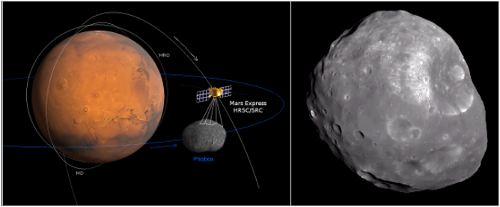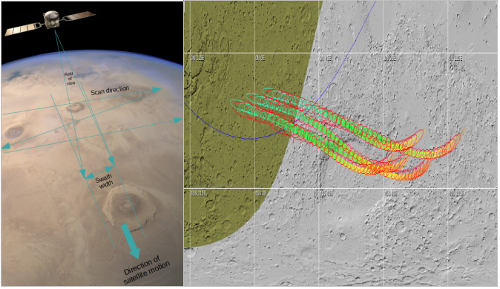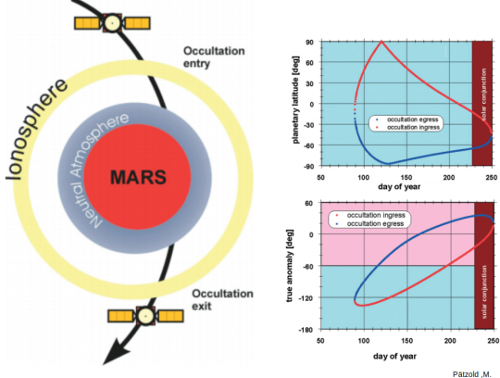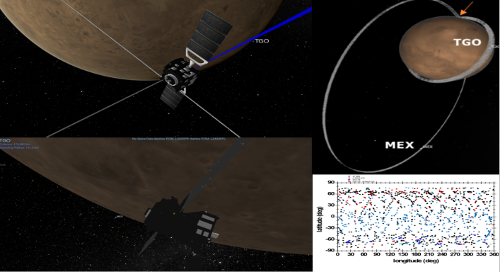Challenges for the New Science Campaigns in Mars Express future Mission Extensions
- 1Aurora Technology B.V for ESA (jmarin@sciops.esa.int)
- 2Serco for ESA
- 3Telespazio VEGA Deutschland GmbH for ESA
- 4Rhea Group for ESA
- 5European Space Agency, ESAC, Villanueva de la cañada, Madrid, Spain
- 6European Space Agency, ESTEC, Noordwijk, Netherlands.
INTRODUCTION
MEX remains one of ESA’s most scientifically productive missions and has fully accomplished its initial mission objectives. It was the first European mission to Mars and the first ESA mission to orbit another planet. Its global surveys of the surface, the atmosphere and the plasma environment of the Red Planet were possible to achieve thanks to the elliptical orbit of MEX. The mission provides a unique platform for Mars climate evolution research to help understand the complex atmospheric processes present on Mars. This scenario is ideal for fulfilling diverse science goals from the instruments on board with new scientific and operational challenges in the coming years.
NEW CHALLENGES FOR MISSION EXTENSIONS 2021-2022 and 2023-2025
In addition to the regular global surface, climate and plasma monitoring, the future mission extensions will have various new challenging science campaigns. The scientific goals for the extensions 2021-2022 and 2023-2025 are described in detail by (Titov et al EPSC2020).
Figure 1. Main scientific and operational seasons for Mars Express between 2021 and 2025
These are some of the new challenging objectives that are planned for the mission extensions :
-
Hi-resolution observations of atmosphere & ionosphere
-
First active plasma sounding at another planet (MARSIS/ASPERA)
-
MEX/TGO inter-spacecraft occultation radio science
-
Ionosphere and plasma at Solar Maximum
-
Global topography (completion of colour & stereo imagery)
-
Active & transient surface effects
-
Phobos observatios with full instrument suite
-
Joint observations with TGO and Rosalind Franklin (RSP)
With the successive confirmations of the Mars Express (MEX) mission extension, doors are opened to gather new science. New technological challenges appear in the Science Ground Segment (SGS) of the European Space Agency, which is characterized by its variability, flexibility and diversity.
IMPLEMENTATION OF NEW SCIENCE OBSERVATIONS
In this manuscript we present here various new observation campaigns that are defined to fulfil the scientific objectives of the new mission extensions and summarize the inventive modifications our team has made in order to continue with the flexibility in terms of planning the mission extensions.
Mars Express has a highly elliptical polar orbit that crosses the equatorial orbit of Phobos every 5~7 months (Figure 2 and Witasse et al.2014). During these seasons, several flyby campaigns are organized and all instruments are pointed to the moon with different observation requirements (illumination, distance, rotation rates, etc).

Figure 2. Illustration of Mars Express crossing Phobos orbit. Image taken by HRSC in November
2019, orbit 20076, at a distance of ~2400 km (ESA/DLR/FU Berlin).
A good example of new science campaigns are the new Local Time Scans, where the spacecraft is rotated (Figure 3) to cover a wide range of local times and longitudes in the same latitude region.

Figure 3. Mars Express Local Time Scans. Left: spacecraft is rotated along the scan direction,
perpendicular to the satellite motion. Right: three local time scans over Hellas planitia; red circles
show PFS field of view; colours represent illumination angle (cyan is dark around local morning,
yellow is brighter close to local noon). (Credit ESA/DLR/FU Berlin/MAPPS/J.Marín-Yaseli)
This Local Time Scanning campaign was created in 2019 based on a new request by the Planetary Fourier Spectrometer (PFS) to increase the local time coverage of the measurements to improve the climatic record, which was limited by the spacecraft trajectory. Based on this requirement, a new pointing type was defined to improve the local time coverage over certain regions of the planet. This new observation type is now used by all spectrometers (PFS, SPICAM, OMEGA) allowing for the identification of inter-diurnal variations in certain regions of interest, as shown for Hellas Planitia above.
New tests will be executed throughout summer 2020 to assess the performance of radio measurements at the exit of the earth occultations (Figure4). Although the operational concepts of ingress+egress occultations were formulated at the beginning of the mission, it was not until mid-2020 that the first campaigns were revised for execution. The egress occultations will bring the opportunity to observe wider latitude/longitude areas still uncovered by previous campaigns.

Figure 4. Radio Science ingress+egress occultations as seen from the Earth (left) and plotted against
latitude and true anomaly (right).
The first tests to carry out radio science communications between the two spacecraft are expected to start by the end of 2020 (Figure 5 and Cardesín-Moinelo, et al. Icarus 2020). The technical and scientific requirements for these new observations impose new challenges in the operations of the two missions. In particular, the preparation of the observations requires a long-term geometrical analysis of the pointing requirements and visibility opportunities between the two spacecraft, as well as detailed coordination between the scientific and technical teams for the configuration and execution of the measurements to ensure the correct data interpretation.

Figure 5. Illustrations of radio occultation between Mars Express and Trace Gas Orbiter. Bottom-right
shows the good latitude/longitude coverage for the occultations. (ESA/SPICE/Cosmographia)
CONCLUSIONS
Planning the science operations for MEX continues to be a challenge. Coordination and fast changes among the different teams at ESA enables Mars Express to continue doing science for many more years. It requires a qualified science operations team with both engineering and scientific experience to achieve the goals of the mission. It is vital to take advantage of long term missions such as MEX in order to transfer the planning knowledge and experience to complex planetary missions of the future.
How to cite: Marín-Yaseli de la Parra, J., Cardesín-Moinelo, A., Merritt, D., Breitfellner, M., Castillo Fraile, M., Grotheer, E., Costa í Sitjà, M., Muñiz Solaz, C., Ravanis, E., Martin, P., and Titov, D.: Challenges for the New Science Campaigns in Mars Express future Mission Extensions, Europlanet Science Congress 2020, online, 21 September–9 Oct 2020, EPSC2020-632, https://doi.org/10.5194/epsc2020-632, 2020

